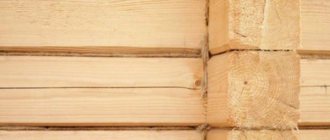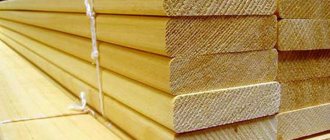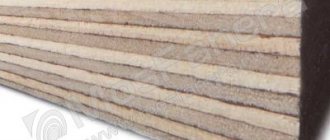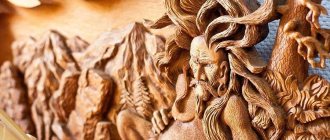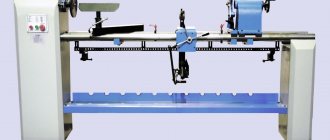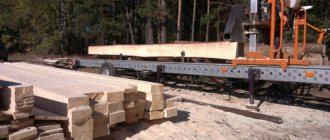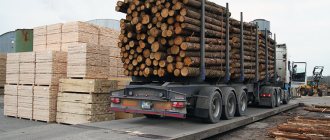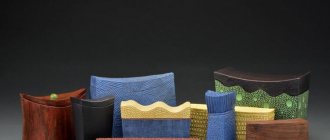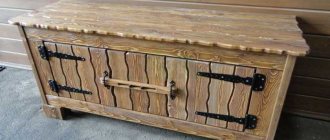Important features of using lumber
Lumber has become widespread in various types of construction work. They are used at the stage of preparatory work when installing the foundation of a building, when installing formwork; lumber is indispensable when installing interfloor ceilings and partitions; during the construction of temporary buildings; when installing roofs.
At the stage of completion of construction, window blocks are installed, the roof is sheathed, as well as interior finishing, then the exterior finishing of the object begins, and at each stage of these construction processes it is necessary to use lumber, this is especially true when constructing cottages, summer houses and residences.
Due to the demand for this building material, the range of wood is quite large and is ready to satisfy the demand of a wide range of consumers. Depending on the type of construction work, different types of lumber are used.
Pros and cons of lumber
Wood has been used as a building or finishing material for many thousands of years. Outbuildings, huts, churches, and baths were built from it. Later they learned to make window and door openings and furniture (chairs, tables, cabinets, cabinets) from wood. Today wood is still very popular. Due to the many advantages of the material itself, wood construction and finishing products are becoming even more in demand nowadays.
The main advantages of lumber are:
- High load-bearing capacity with low specific gravity;
- The material lends itself very easily to various types of processing (cutting, milling, drilling, creating grooves and furrows). And this despite the fact that the wood is quite durable;
- Possibility of creating shaped structures and products from wood;
- Environmental friendliness and safety of the material for human and animal health, as well as for the environment;
- Does not cause allergies;
- The processing is quite simple, there is no need to use expensive equipment;
- Attractive appearance;
- A pleasant smell that creates a healthy microclimate in the room;
- Wide range of product shapes and sizes;
- Low price;
- Convenient transportation;
- Accuracy of geometric parameters.
Lumber also has some disadvantages:
- With constant exposure to water or a humid environment, wood begins to rot;
- Under the influence of fungus and mold, as well as various types of insects, wood is destroyed;
- The material can ignite quickly and is flammable.
To ensure that lumber does not pose a danger, and also has increased wear resistance and a long service life, they are treated with special protective substances - antipyretics and antiseptics.
Types of lumber and their grades
Processing technology allows materials to be delivered ready-made to the construction site in the form of bars, slats, and boards obtained directly from cutting tree trunks.
According to the processing method, lumber is divided into edged and unedged . Edged ones are characterized by the same width and length, the presence of smooth edges, the height of which is in the range of 13–100 mm. The surface of such materials can be planed. Unedged lumber, on the other hand, has a raw edge and quite different widths.
Sample of sawing round timber
Labor lesson in 6th grade “Wood and its use”
Wood and its use.
Deciduous and coniferous wood.
Goals:
To familiarize students with the essence of the concept of technology; creative projects of students; rules of safe behavior in the office; requirements for labor organization and workplace equipment; the importance of wood as a structural material in the national economy; teach to identify tree species by the appearance of samples; cultivate respect for work and working people, careful attitude towards tools, equipment, materials; develop skills in human environmental activities.
Lesson type:
lecture-conversation.
Teaching methods:
explanatory and illustrative.
Visual aids:
a set of species samples and timber lumber.
Tools and equipment:
instructions on the rules of conduct and safety precautions when working in a school workshop.
DURING THE CLASSES
Organizational and preparatory part
- Greeting the teacher, checking attendance.
Checking students' readiness for the lesson.
Induction training
- Familiarization of students with the basic rules of behavior and safety precautions when conducting classes in a training workshop.
3. Repetition of the material covered.
3.1 What is markup?
3.2 What marking tool do you know?
3.3 How can you draw parallel lines on a workpiece?
4. Theoretical part.
4.1 Presentation of new educational material. (this material is in the lesson appendix).
Deciduous and coniferous wood.
Wood is a dense natural material that consists of the roots, trunk and branches of a tree. Most wood is concentrated in trunks, which are cut into pieces. It is often called industrial wood. It is prepared from tree trunks cut down and cleared of branches and twigs - whips. The trunk, branches, roots, leaves (needles) are used in industry in different ways: wood chips, varnishes, and resin are obtained from the branches; turpentine and rosin are obtained from the roots; The trunks are subsequently used to make various building structures, furniture, paper, and toys.
There are two types of tree species growing in Russia – coniferous and deciduous. Conifers include such species as spruce, pine, larch, fir, and cedar. Deciduous species - maple, aspen, birch, oak.
Trees with foliage are called deciduous, and those with needles are called coniferous. Almost all conifers are evergreen, with the exception of larch, which sheds its needles in late autumn. Deciduous trees have wide leaves that fall off in the fall.
The distinctive properties of the wood species are: bark, needles (leaves). Color, smell, location of branches and branches, hardness, texture. Texture is the pattern of the surface of wood formed as a result of cutting growth rings and fibers.
Industrial wood is obtained from tree cuts by sawing them into pieces. The trunk is the most used part of the tree, which has a thicker (butt) part at the base and a thinner part at the top.
The wood industry produces lumber. Wood materials obtained by sawing logs lengthwise are called lumber.
Boards are lumber up to 100 mm thick and more than double the thickness. They produce edged and unedged. Timber – lumber with a thickness and width of more than 100 mm. If the beam is sawn on both sides, then it is called two-edged, and if on four sides, then it is called four-edged. Bars are lumber up to 100 mm thick and less than twice the width. Plates - obtained by longitudinally sawing a log in half, and quarters - into four parts. A slab, or obapol, is the sawn side part of a log. Lumber has the following elements: faces, edges, ends and ribs. The widest plane of the lumber is called a face, and the narrowest plane is called an edge. An edge is the line of intersection of two planes. End – transverse (end) plane of lumber.
There is another common type of construction material - plywood.
Plywood is produced by gluing three (or more) thin sheets of wood – veneer – onto each other. Veneer is produced industrially by cutting thin layers on special machines. Next, the veneer sheets are dried, spread with glue and laid on top of each other so that the direction of the fibers in them is perpendicular to each other. Then everything is pressed with a press.
Varieties of construction materials also include particle boards ( chipboard
) and fibreboard (
fibreboard
). Chipboard is obtained by grinding wood in the form of shavings, sawdust, wood dust with further mixing with glue and pressing, and fiberboard is obtained from steamed and crushed mass. Fiberboards have a pleasant gray color and a perfectly smooth surface; on the surface of the chipboard you can see fragments of wood processing in the form of shavings and sawdust.
4. Practical part.
Exercise. Determination of wood species in types of lumber.
Equipment. Measuring tools (ruler, compass, tape measure, triangle), samples of various types of wood (boards, bars, slats).
The order of work. Using the samples, determine the type of lumber: chipboard, fiberboard, block, board (edged, unedged, slab). On a sample of an edged board, show the face, edge, end, edge. Count the total number of layers of plywood and measure its thickness.
5. Lesson summary.
5.1 Report on independent work carried out.
5.2 Evaluation of students’ practical work.
Classification of lumber
All lumber is divided into the following main types:
- tes - thin planks obtained from trees of various species (previously tes were made by splitting logs with wedges and then chipping off the irregularities - hence the name), thickness ranges from 19 to 25 mm, the length of such lumber is usually from 4 to 6.4 meters;
- block - lumber with a thickness of up to 100 mm and a width of no more than two thickness sizes;
- log - these are sections from the middle and upper part of a tree trunk or, if the diameter of the timber being harvested is small, then the entire part of the trunk after cutting off the top and clearing of branches and bark;
- ridge - the lower parts of tree trunks - this is the highest quality wood, used for the production of the highest grades of lumber, veneer, etc.;
- garter - a thoroughly cleaned tree trunk with a cross-sectional diameter of less than 25 cm;
- pole - a tree trunk, cleared of bark, having a cross-sectional diameter of less than 9 cm;
- plate - obtained by sawing a ridge into halves, equal in size, as well as in the direction of the wood fibers;
- quarter - obtained by sawing a plate into equal halves according to the direction of the wood fibers;
- laying - a log, hewn (sawdust) on both sides directly for its subsequent correct laying;
- timber - similar to a log, however, it is hewn (sawed) on all sides and has a rectangular cross-section;
- board – lumber having a thickness of up to 100 mm, the width of which is more than twice the thickness;
- beam - beams are made from solid wood with a thickness of 50 mm and a height of 150 and 175 mm, intended for the installation of floors and coverings.
Raw materials for production
The primary raw material for the production of lumber is the trunks of almost any tree, previously cleared of branches and bark. Coniferous wood is usually used for the construction of load-bearing structures. Hardwood is most often used for all kinds of finishing work. It is worth noting that the waste obtained during the production of lumber is used both in industry and in everyday life.
The most affordable wood for lumber production is poplar and birch. Quite often, pine, spruce, linden, larch, ash and maple wood is used for these purposes. Hornbeam, oak, and cedar wood are important for industry.
The lightness of birch does not make the wood less durable, but its beautiful structure and affordable price have made it even more popular. Larch is considered very moisture resistant, resistant to fungus and mold. Ash wood boasts good elasticity and impact resistance.
Beech is indispensable for making floors, stairs and furniture. Incredibly durable and incredibly beautiful oak wood, despite its fairly high price, is very much in demand. Pine contains a large amount of resin, so it is most prone to rapid combustion. Although spruce wood is less durable, it is quite flexible and soft, so it can be easily processed.
Types of lumber
The division into grades is carried out by assessing the condition of the worst side of the edge, section and face.
For example, premium lumber should not have rot, fungal spots, mold, cancer spots, growths and much more on the surface. There should also be no cracks or shrinkage. Allowed presence:
- fused healthy knots (up to two per meter of length);
- Sheet cracks (up to 16%);
- Deep cracks (no more than 10%);
- Shallow edge cracks (up to 16%).
Sawn timber without a single defect is used in automotive or shipbuilding.
First grade lumber is used in the wood manufacturing industry. This type of material does not have:
- Dry, loose branches or healthy branches larger than a centimeter;
- Cracks larger than a centimeter;
- Bark-covered wounds on wood;
- Young active layers of wood;
- Mechanical damage;
- Mold;
- Rottenness;
- Foreign inclusions.
Second grade lumber is used in the production of furniture. Such lumber is distinguished by the absence of cracks with a total length of more than a third of the length of the product itself. Also, there cannot be more than three wormholes on the surface of the material per meter of board length. Also, on second-grade products you will not find:
- Mechanical damage;
- Various inclusions;
- Traces of parasite damage;
- Rottenness.
Third grade products are intended for the manufacture of containers, since they may already have certain defects. Materials made from grade 4 wood are used in construction:
- Gazebo;
- Outbuildings and summer kitchens;
- Change houses;
Also made from these materials:
- Boxes;
- Loess;
- Construction formwork;
- Pallets.
How to choose the right variety
Once the wood arrives at the warehouse, it is no longer checked for defects. When purchasing timber, a person must rely on regulatory control and his own knowledge. To make the right choice, you need to study the varietal characteristics and rely only on them.
Often, instead of digital values, wood grades are marked with the letters A, B, C. These designations correspond to the number of defects in the product.
Sometimes you may encounter the fact that a selective class is marked with the number 0, or with an ordinary horizontal line. The first class (1) is indicated by a dot, the second by two dots or two slashes. Third grade (3), by analogy, 3 dots or 3 vertical stripes. Each manufacturer labels their products differently.
Tips for choosing lumber:
If the products are required for outdoor use, then you should pay attention to the absence of deep cracks on them. As for knots, they significantly reduce the mechanical characteristics of wood. Closely spaced growth rings are a sign of material strength
If the rings run parallel to each other, then you can safely make furniture from such wood. Hardwoods are suitable for constructing stairs and flooring. You should not use selected grade timber where second- or third-grade raw materials will do.
You can determine the quality and type of wood visually, but it is better to purchase timber from a trusted supplier.
Sawlog standards
Strict requirements are imposed on building materials made of wood, and they relate not only to standard sizes, but also to the degree of dryness, number and type of defects. GOST for lumber contains detailed information.
The following features of sawlogs are divided into categories:
- The manufacturer divides the timber and board into five grades (the names of the categories are classes and groups). Timber is divided into only four classes;
- the degree of surface treatment (maximum size of irregularities on the plane of the tree) cannot be more than 1250 microns for grades not lower than the third, and 1600 microns for the fourth;
- in terms of humidity, the requirements are 22% for the third class. For the fourth, this indicator is not regulated;
Important! It is possible to supply lumber with a certain degree of humidity, treated with an antiseptic. This procedure is permitted only by agreement with the customer.
Variety of types of lumber
What is variety, assortment and assortment
In real life, no one, when buying lumber in a store, counts the number of knots and cracks to determine the class of wood. But these signs determine the type of material, category and its classification. The volume of wood defects is determined by standard control. The selection of lumber should be carried out in accordance with the grade.
What are grades in relation to lumber? The marking uses letters; grades are determined by the quality of the wood and the presence of a certain number of defects:
- “Extra” grade means the use of wood without defects for the manufacture of lumber.
- Grade A – allows no more than 1-2 knots per unit of material.
- Grade B – allows 1-2 knots per linear meter of board (slat, timber).
- Grade C – allows an unlimited number of knots, no holes from knots are allowed.
- Economy grade is the cheapest type of sawlog; it allows any number of knots, including hollow ones.
Labeling and sorting depends on the manufacturer - the grade of material is indicated using numbers, then the “extra” grade will correspond to the number “0”, A - “1”, B - “2” and so on. Now, when selecting lumber, all you have to do is clearly determine what type of wood you need.
Grade. When choosing a material, you need to know the characteristics of the wood, why it is purchased, and where it will be installed.
- Grade “extra” and A (1) are used in the most important structural units and beams. For the production of structural materials, only hardwood should be used;
- Grade 2 – used for simple elements: flooring, wall panels, etc.;
- Grade 3 – suitable for nodes without heavy loads;
- Grade 4 - suitable only for auxiliary products - containers and other things.
Assortment and assortment. Approximately the same concepts are used to classify wood building materials.
Assortment is a division of sawlogs according to dimensional and functional characteristics. For example, timber is made from any type of wood, with different quality, but according to the assortment it will remain timber.
Assortment – classifies sawlogs by standard sizes. Several standards are provided. The grade of goods differs in the processing of the goods, storage conditions, etc.
GOST 24454-80 standards regulate dimensions and assortment; here is a description of the requirements for materials.
In addition, the assortment includes the following categories:
- croaker;
- beam and whetstone;
- both sexes;
- sleepers;
- boards of various thicknesses.
The latter are especially in demand; no construction can be completed without them.
Scheme for cutting lumber from logs
Popular message topics
- City of Kurgan
Kurgan is a city founded in 1553, located on the Tobol River and bordering Kazakhstan. Until the 17th century, it was a military settlement. But in the 18th century, due to shifting state borders, it no longer made sense to station troops here. - Minerals
The formation of human life on Earth has come a long way. People acquired a lot of knowledge and skills. Now they are used to living well and not needing anything. To improve their lives, people need to attract costs and a variety of - Software Software
is a set of programs that help perform certain functions and tasks on a personal computer. A program is a certain sequence of actions written in a specialized machine language.
